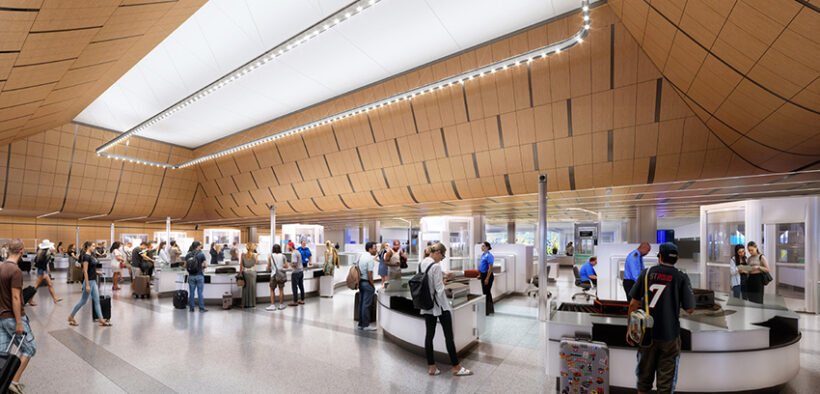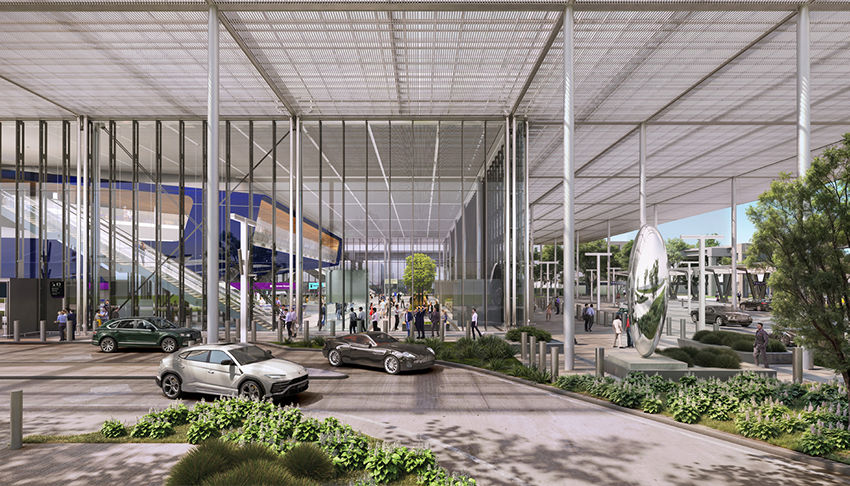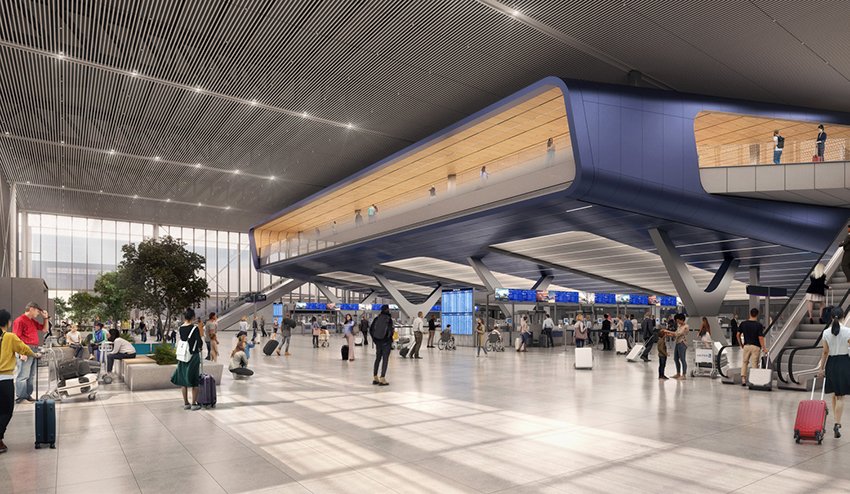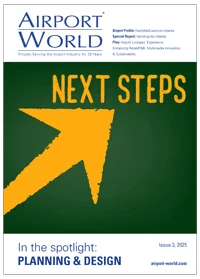Breaking the mould: Design innovation at two Texas gateways
Share

Page’s Lee Glenn and Jeff Mechlem tell us more about innovations in security and the passenger experience at Houston George Bush and Austin-Bergstrom airports in Texas.
A well-designed airport isn’t just about moving people from kerb to gate – it’s about creating an intuitive, seamless journey.
Often security can pose a major challenge to the goal of achieving a seamless journey for passengers, but it can become a natural part of the process when thoughtfully integrated.
Striving for a seamless journey in Texas are Houston’s George Bush Intercontinental Airport (IAH) and Austin-Bergstrom International Airport (AUS), both of which are undertaking major expansion projects that could potentially help shape the future of air travel and improve all aspects of the journey.
From a floating security structure at IAH’s Terminal B to early-stage planning at AUS that anticipates passenger demand for decades, these projects highlight a shift in airport design that enhances security and the overall travel experience.
ELEVATING SECURITY AT IAH’S TERMINAL B
Designing for security has long been about containment – enclosing the space, controlling movement, and filtering people through as quickly as possible.
But what if security wasn’t a bottleneck? What if it was an elevated experience – both figuratively and literally?
That’s the idea behind Terminal B at IAH, a transformative project led by United Airlines and designed in collaboration by Page and Grimshaw. Here, a floating security structure marks a radical departure from conventional checkpoint layouts.
Instead of wedging security checkpoints amid the terminal’s flow, they are lifted above the main circulation area, creating a distinct space for screening. This reconfiguration frees up the room below and offers a more intuitive and stress-free experience.
During terminal planning, this approach helped accommodate space constraints, while the final design introduced a highly creative and distinctive solution to enhance the passenger experience.
Beyond aesthetics, this new layout improves security by addressing the psychological aspects of crowding and confusion – factors that can contribute to security risks.
A space with clear sightlines, logical movement, generous volume and dynamic lighting fosters a more relaxed environment, transforming what could be a congested, high-stress checkpoint into a streamlined, frictionless and pleasant process.
The resulting spacious security area accommodates higher throughput without sacrificing comfort.

Security isn’t static, and the space designed to support it shouldn’t be either. A key screening innovation in Terminal B is the integration of biometric screening, including facial recognition technology and automated processing lanes.
These advancements reduce human error and expedite security, allowing passengers to move through checkpoints with minimal stops while maintaining high safety standards.
The terminal’s adaptable design ensures it can easily integrate future technologies, such as AI-powered threat detection and new scanning processes, which will define the next decade of airport security.
The reconfiguration of Terminal B also enhances connections to other airport operations. Concourses are accessed from the upper level recompose area, through the Central Hall in the repurposed original 1969 terminal building.
At the heart of the Central Hall is a dynamic media display enclosing an existing vertical circulation core and providing an exciting landmark. Baggage claim areas are accessed through this core, with planning that guides natural movement rather than funnelling travellers into narrow, high-traffic corridors.
The goal is an environment where security and post-security are efficient and unobtrusive, something travellers experience without actively thinking about.
Security innovations also extend to the terminal’s architecture. The design of the terminal’s structure plays a role in security efficiency – open spaces and increased ceiling heights improve visibility for both passengers and security personnel, reducing blind spots and enhancing overall awareness.
Additionally, the placement of digital wayfinding systems helps passengers anticipate the next steps in their journey, eliminating the uncertainty that often leads to congestion.
PRE-DESIGN WITH PURPOSE: FORWARD-THINKING STRATEGY AT AUSTIN-BERGSTROM
In Austin, the challenge isn’t just building for post-security viability, but timing the right moves.
The airport programme, designed in collaboration by Page and Fentress, is in pre-design, meaning today’s decisions will shape its adaptability for decades.
Unlike IAH’s transformation of an existing terminal, AUS is planning a new midfield concourse that will be connected by an underground tunnel for passengers, utilities, and baggage systems.
Design choices are focused not on immediate needs, but on what will be required in 2040, 2050, and beyond as the airport grows with further concourse expansions.
Scalability is crucial. Austin’s population is growing rapidly, and air travel demand is projected to double in the coming decades.
The existing airport is designed to handle 15 million passengers, but in 2022 it served 21.1 million passengers, and with forecasts projecting growth to continue into the next decade, there is a need for a multi-year expansion plan that must be flexible enough to evolve without requiring major overhauls.

Passenger experience must seamlessly integrate with programmatic needs for this growing airport, minimising congestion while allowing for the adoption of new technologies.
AI-driven simulations will help designers test different scenarios for passenger flow, ensuring that the infrastructure can evolve alongside security advancements.
Additionally, AI-powered heat mapping will provide real-time insights into congestion, allowing airport staff to adjust operations dynamically and maintain smooth passenger flow, even during peak times.
Beyond security, Austin’s expansion improves the passenger experience for both arrivals and departures. The concourse layout is designed to minimise the perception of long walking distances, with intuitive signage and amenity areas that promote relaxation rather than stress.
Comfortable spaces encourage efficient movement, which benefits both security and overall airport operations.
Sustainability is also central to AUS’ long-term vision. The design incorporates natural lighting, energy-efficient systems, and water conservation initiatives to reduce the environmental impact of expansion.
THE NEXT GENERATION OF AIRPORT DESIGN
Future-proofing for the next generation of air travel isn’t just about building for now – it’s about ensuring airports can adapt to the future.
Whether that’s new security challenges, evolving passenger expectations, or yet-to-be-invented technologies, the spaces designed today are built to accommodate change rather than resist it.
As airports evolve, we believe that the projects at IAH and AUS will serve as a blueprint for integrating security and passenger movement with overall experience.
Indeed, in our opinion, these initiatives set a new standard for how terminals can balance safety, innovation, and user-friendly design, offering a nationwide model for future airport expansions.
The future of the air travel experience depends on how well airports can adapt to the ever-changing technical landscape of global aviation.






